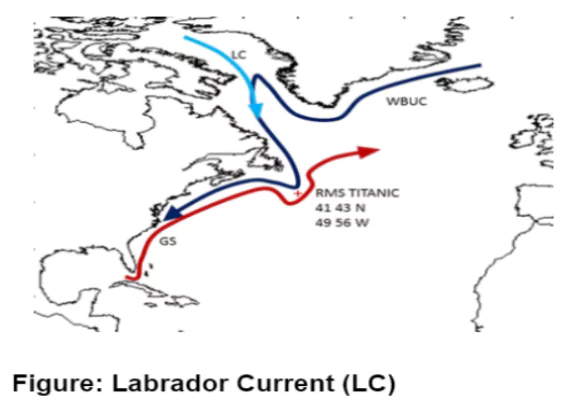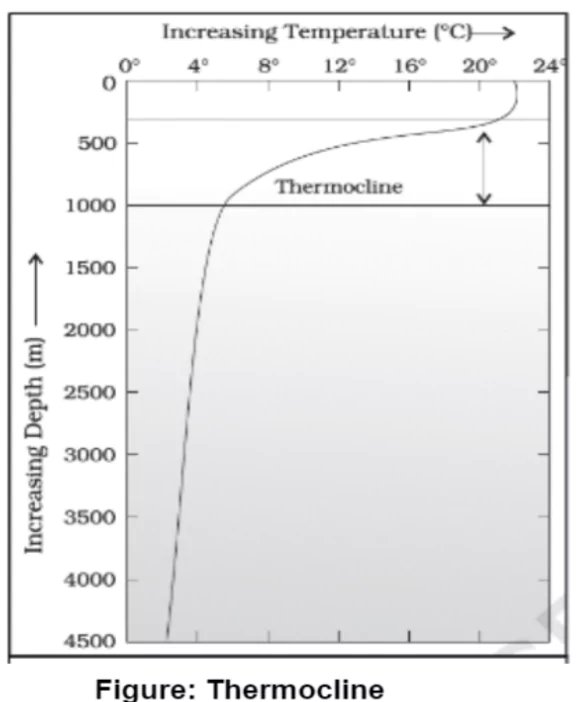Introduction
Understanding the temperature of ocean waters is crucial for various aspects of life on Earth. From influencing weather patterns to sustaining marine life, ocean temperature plays a vital role. Let’s explore the factors that determine the temperature of the oceans, from the surface to the depths, and how they vary across different regions and latitudes.
Factors Affecting Temperature of Ocean Waters
- Heat Sources for Oceans: The Sun is the primary heat source, along with the internal Earth’s heat (minor component).
- Average Temperature: ocean temperature is 3-4°C with variability in the upper 200m.
- Deep-water survival relies on Earth’s heat, not sunlight.
- Latitude: Surface water temperature decreases poleward due to decreasing insolation.
- Unequal Distribution of Land and Water: Oceans in the northern hemisphere receive more heat due to their contact with a larger extent of land.
- Prevailing Wind: Winds blowing from the land towards the oceans result in the upwelling of cold water from below, resulting in a longitudinal variation in the temperature;
- The onshore winds pile up warm water near the coast, raising the temperature.
 Ocean Currents: Warm ocean currents raise the temperature in cold areas, while cold currents decrease the temperature in warm ocean areas.
Ocean Currents: Warm ocean currents raise the temperature in cold areas, while cold currents decrease the temperature in warm ocean areas.
- Example: Gulf Stream (Warm current) raises the temperature near the eastern coast of North America and the West Coast of Europe,
- Labrador current (cold current) lowers the temperature near the northeast coast of North America.
- Temperature Dynamics of Enclosed Seas: The process of heating and cooling of oceanic water is slower than that of land;
- Enclosed Seas in the Low Latitudes: Record relatively higher temperatures than the open seas;
- Enclosed Seas in the High Latitudes: have lower temperatures than the open seas.
- Example: The Red Sea has a higher temperature than the open seas.
Enroll now for UPSC Online Course
Vertical Distribution of Temperature in Oceans

- Vertical Temperature Profile of Oceans: Temperature decreases with increasing depth of the ocean.
- The temperature structure of oceans over middle and low latitudes can be described as a three-layer system from the surface to the bottom.
- Top Layer (Epilimnion): Layer of warm oceanic water; about 500 m thick with temperatures ranging between 20° and 25° C;
- Present throughout the year within the tropical region, but in mid latitudes it develops only during summer
- Epipelagic Zone (or upper open ocean): It is part of the ocean where there is enough sunlight for algae to utilise photosynthesis.
- Thermocline Layer (Metalimnion): Vertical zone below the first layer;
- Rapid decrease in temperature with depth; 500 -1,000 m thick.
- Seasonal Thermocline Dynamics: Seasonal variations affect thermocline depth; Shallower thermocline in summer, deeper in winter.
- Third Layer: Very cold and extends up to the deep ocean floor. In the Arctic and Antarctic circles,
- Temperature change with depth is slight as the surface water temperatures are close to 0° C. Here,
- Only one layer of cold water exists, which extends from the surface to the deep ocean floor.
Horizontal Temperature Variations
- Average Surface Temperature: is approximately 27°C and gradually decreases from the equator to the poles.
- Latitude Influence: Temperature decreases with increasing latitude (0.5°C per latitude).
- Hemispheric Contrast: Northern Hemisphere records higher temperatures than southern hemisphere due to unequal distribution of land and water.
- Tropics record the highest temperature and not the Equator, as the Equator has clouds and witnesses rainfall due to rising air currents (convection).
- Warm and cold currents affect the rate of change of temperature with latitude
Conclusion
- The temperature of ocean waters is a complex interplay of various factors, from solar radiation to ocean currents and seasonal variations. These temperature dynamics have far-reaching implications, impacting everything from marine biodiversity to global climate patterns.
- Understanding and monitoring ocean temperatures is essential for safeguarding our planet’s delicate ecological balance and ensuring the well-being of future generations.
![]() May 1, 2024
May 1, 2024
![]() 3553
3553
![]() 0
0
 Ocean Currents: Warm ocean currents raise the temperature in cold areas, while cold currents decrease the temperature in warm ocean areas.
Ocean Currents: Warm ocean currents raise the temperature in cold areas, while cold currents decrease the temperature in warm ocean areas.
